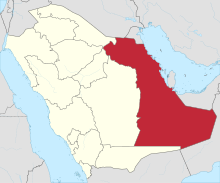
Al Ahsa also known as Hajar is the largest governorate in Saudi Arabia's Eastern Province, named after the Al-Ahsa Oasis. The name Al-Ahsa is also given to the biggest city in the governorate, Hofuf. In Classical Arabic, 'Ahsa' means the sound of water underground. It has one of the largest oases in the world with world-renowned date palms and, according to one author, the oases of Al-Hasa and Al Ain are the most important in the Arabian Peninsula. The oasis is located about 60 mi (97 km) inland from the Persian Gulf. All urban areas are located in the traditional oasis of Al-Hasa. In addition to the oasis, the county also includes the giant Empty Quarter desert, making it the largest governorate in Saudi Arabia in terms of area. The Empty Quarter has the world's largest oil fields, and connects Saudi Arabia to Qatar, the UAE, and Oman. The Governorate's population is over 1,100,000. In the past, Al-Ahsa belonged to the historical region known as Bahrain, along with Qatif and the present-day Bahrain islands.

Terrorism in Saudi Arabia has mainly been attributed to Islamic extremists. Their targets included foreign civilians—Westerners affiliated with its oil-based economy—as well as Saudi Arabian civilians and security forces. Anti-Western attacks have occurred in Saudi Arabia dating back to 1995. Saudi Arabia itself has been accused of funding terrorism in other countries, including Syria.
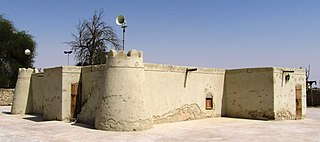
Jawatha Mosque, also incorrectly spelled Al-Jawan, is located in the Jawāthā, about 12 km (7.5 mi) northeast of Hofuf, Al-Ahsa, Saudi Arabia. It was the earliest known mosque built in eastern Arabia, and most of the original structure is in ruins. Nevertheless, the site is still used for prayer.

Articles related to Saudi Arabia include:
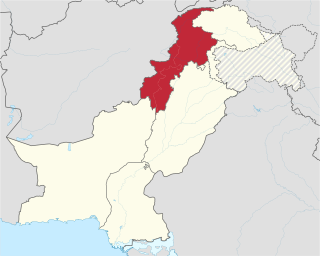
December 2009 Lower Dir mosque bombing was a suicide bombing just outside a mosque in the town of Timergara in Lower Dir District in Pakistan on Friday 18 December 2009.Police said that the bomber had tried to enter the mosque during afternoon prayers but didn't succeed due to security measures. He then blew up his explosives-packed vehicle near the gate of the mosque. At least 12 people were killed and 28 wounded in the attack. Most of the dead were policemen who were leaving the mosque after Friday prayers. The mosque is adjacent to the district police headquarters.
The Qatif and Dammam mosque bombings occurred on 22 and 29 May 2015. On Friday May 22, a suicide bomber attacked the Shia "Imam Ali ibn Abi Talib Mosque" situated in Qudeih village of Qatif city in Eastern Province, Saudi Arabia. The Islamic State claimed responsibility for the blast, which killed at least 21 people. The event is the second deadly attack against Shia in six months.

A suicide bombing took place on 26 June 2015 at a Shia mosque in Kuwait. The Islamic State of Iraq and the Levant claimed responsibility for the attack. Sabah al-Sabah, the Emir at the time, arrived at the location of the incident after a short period of time. Twenty-seven people were killed and 227 people were wounded.
On 26 June 2015, attacks occurred in France, Kuwait, and Tunisia, one day following a deadly massacre in Syria. The day of the attacks was dubbed "Bloody Friday" by Anglophone media and "Black Friday" among Francophone media in Europe and North Africa.
The response of Saudi Arabia to the Islamic State has taken many forms. For example, Saudi government agencies have worked with the United States since late 2014 to train and equip Syrian fighters hoping to engage with Islamic State of Iraq and the Levant (ISIL) militants. The challenges of dealing with ISIL is complicated by the fact that around 2,500 militants originally from Saudi territory have left for Syria in order to join ISIL, the destabilization created by the Syrian Civil War having a big effect on the region.
The following lists events that happened in 2016 in the Kingdom of Saudi Arabia.
Shia Muslims have been persecuted by the Islamic State, an Islamic extremist group, since 2014. Persecutions have taken place in Iraq, Syria, and other parts of the world.
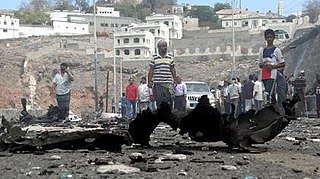
The Aden unrest refers to initially ongoing conflict between Islamist factions, such as al-Qaeda in the Arabian Peninsula, and Islamic State of Iraq and the Levant's Yemen Branch, against the loyalists of president Abd Rabbuh Mansur Hadi and later to conflict between UAE-backed and Saudi-backed factions within the coalition. In 2017, fighting also broke out between factions aligned with different members of the Saudi-led coalition namely Saudi Arabia-backed Abdrabbuh Mansur Hadi and Al-Islah and UAE-backed separatist Southern Transitional Council and Southern Movement.
On 4 July 2016, four suicide bombs exploded in three locations in Saudi Arabia. One of these exploded in the parking lots of the Al-Masjid an-Nabawi, killing at least four people. The second and third suicide bombers targeted a Shia mosque in Qatif, but they failed to harm anyone but themselves. A fourth militant blew himself up after police tried to arrest him near the U.S. consulate in Jeddah. Two Saudi Arabian police officers were injured.
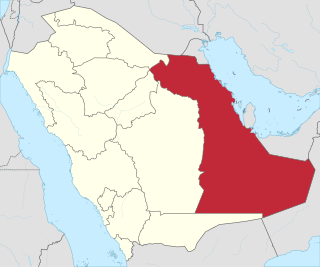
The Qatif conflict is a modern phase of sectarian tensions and violence in Eastern Arabia between Arab Shia Muslims and Arab Sunni majority, which has ruled Saudi Arabia since early 20th century. The conflict encompasses civil unrest which has been sporadically happened since the 1979 uprising, pro-democracy and pro-human rights protests and occasional armed incidents, which increased in 2017 as part of the 2017–20 Qatif unrest.
At 1:50 PM EET on 24 November 2017, the al-Rawda mosque was attacked by roughly 40 gunmen during Friday prayers. The mosque is located in the village of Al-Rawda east of the town of Bir al-Abed in Egypt's North Sinai Governorate. It is one of the main mosques associated with the Jaririya Sufi order, one of the largest Sufi orders in North Sinai. The Jaririya order is named for its founder, Sheikh Eid Abu Jarir, who was a member of the Sawarka tribe and the Jarira clan. The Jarira clan resides in the vicinity of Bir al-Abed. The attack killed 311 people and injured at least 128, making it the deadliest attack in Egyptian history. It was the second-deadliest terrorist attack of 2017, after the Mogadishu bombings on 14 October. The attack was universally condemned by many world leaders and organizations.

The January2021 Baghdad bombings were a pair of terrorist attacks that occurred on 21 January 2021, carried out by two suicide bombers at an open-air market in central Baghdad, Iraq. They killed at least 32 people and injured another 110. This was the Iraqi capital’s first terrorist attack since 2019.
